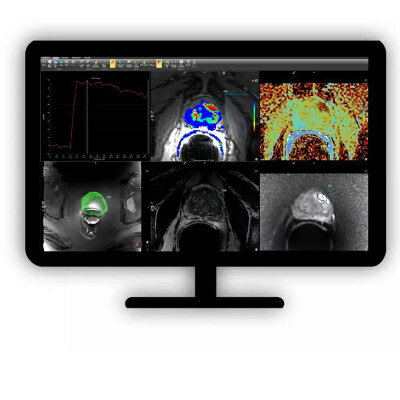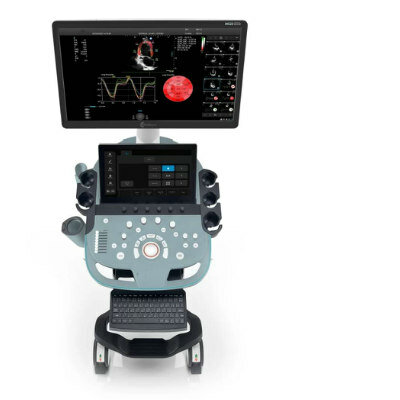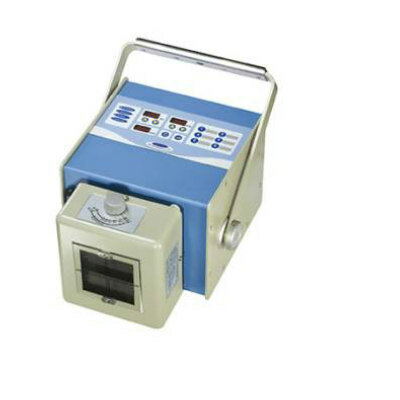Lung Cancer Detection Using CT Scanning More Successful Than Traditional Methods
By MedImaging International staff writers
Posted on 19 Apr 2012
New research indicates that computed tomography (CT) scans are more effective than conventional lung cancer-detection techniques at identifying aggressive lung cancer in their most treatable stages. Posted on 19 Apr 2012
The study’s findings, published online April 2012 in the journal Radiology, demonstrate that lung cancers found through yearly CT screening are similar to those found in routine practice, both in terms of tumor growth rates and cell-type distribution. In fact, the report revealed that 79% of the cases diagnosed through annual repeat CT scans were detected at clinical stage I, the earliest and most treatable stage, compared to only 15% detected through traditional methods.
The study, which is the latest report from the International Early Lung Cancer Action Program (I-ELCAP; Tempe, AZ, USA), counteracts concerns that lung cancers diagnosed through annual repeat rounds of computed tomography (CT) screening may be of less serious forms than those diagnosed in traditional clinical settings when symptoms are already present.
“We’ve previously shown that, similar to common screening methods such as mammography for breast cancer, annual CT scans are effective in early detection of lung cancer. However, there were concerns that the cancer found in these screenings were less serious than those found in routine practice in the clinical setting, and often resulted in excessive treatment,” said Claudia I.
Henschke, PhD, MD, a professor of radiology at Mount Sinai School of Medicine (New York, NY, USA) and I-ELCAP lead investigator. “However, the data show that lung cancers detected with annual repeat rounds of CT scans are just as lethal and require equally aggressive treatment.”
I-ELCAP is an international collaborative group of more than 60 participating institutes consisting of specialists on lung cancer-related diseases. Earlier studies from the group found that lung cancers identified through CT screening have an 80% cure rate compared to a 10% cure rate for lung cancers detected in the clinical setting.
“Lung cancer is by far the leading cause of cancer death among both men and women. However, when lung cancer is caught in an early, treatable stage, the cure rates are significantly higher,” said Dr. Henschke. “It is recommended that people at high risk for lung cancer speak with their health care provider to discuss the benefits and risks of screening in order to make an informed decision about enrolling in a screening program.”
For this study, the researchers reviewed pooled results from the I-ELCAP database for 1993 to 2009, consisting of men and women at risk for lung cancer who underwent annual repeat rounds of CT screening. Researchers found 111 cases of lung cancer, 90 of which were non-small-cell cancers. Out of the 111 cases, 79% were clinical stage I, the earliest and most treatable stage. Non-small-cell lung cancer is the most common form of lung cancer.
The researchers then compared their findings to a 2008 study published in the Journal of Thoracic Oncology analyzing the growth rates of non-small-cell lung cancers detected through traditional methods. The 2008 study found that only about 15% of those cancers were discovered in stage I.
The researchers also discovered that while the first round of CT screening detected a higher proportion of slower-growing cancers than those detected in clinical practice, the subsequent annual repeat rounds of screening reflected what is found in clinical practice.
The investigators then analyzed volume doubling time (growth rate) and cell-type distribution of the cancers. The mean volume doubling time for all cases was 136 days. Volume doubling times for lung cancers diagnosed in clinical practice ranged from 20 to 360 days. For the 90 non-small-cell cancers, mean volume doubling time was 154 days compared to 135 days in the 2008 study.
When researchers evaluated the cell-types of the cancers, they discovered that the frequencies of small-cell carcinoma, which typically develops in the central areas of the lung, and adenocarcinoma, usually located on the outer surface of the lungs, to be approximately 19% and 50%, respectively. In the 2008 study, these frequencies were nearly identical, at 20% and 50%.
Moreover, the researchers found that 89% of the tumors that manifested as solid nodules had considerably faster volume doubling times than the subsolid nodule cancers and may need a less aggressive diagnosis and treatment approach. The researchers defined cancerous nodules as solid if they obscured all of the lung tissue and sub-solid if they did not.
“Identifying the varying growth rates for specific lesion types should allow us to create a more tailored treatment for the patient,” concluded Dr. Henschke.
Related Links:
International Early Lung Cancer Action Program
Mount Sinai School of Medicine














